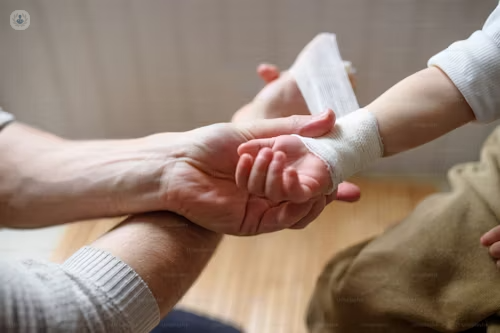Wound culture
What is analysed in a wound culture?
Wound culture involves testing a sample from the infected area to detect and identify pathogenic bacteria. Any type of wound, whether superficial (like scratches, cuts, or scrapes) or deeper (such as incisions, insect bites, or burns), can become infected by a variety of bacteria.

What does the result mean?
The culture helps determine if the wound is infected, which specific bacteria are causing the infection, and the most appropriate antibiotic for treatment. Infections are typically caused by a single predominant bacterium or a dominant bacterial species.
Why is this analysis performed?
It is done when there are signs and symptoms of infection in the wound, such as tenderness, redness, swelling, drainage of fluid or pus, and slow healing. It guides the treatment of wound infections.
When should the analysis be performed?
When infection is suspected in the wound and in cases of wounds that do not heal properly or have complications.
What sample is required?
A sample of fluid, cells, or tissue from the wound is collected. For deeper wounds, samples can be obtained through aspiration of fluid using a syringe or tissue biopsy.
Is any special preparation needed?
No specific preparation is required for this test.
How is it used?
The sample is placed in a culture medium with appropriate nutrients to promote bacterial growth. Bacteria are identified through additional tests, such as Gram staining and mass spectrometry.